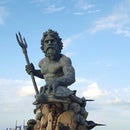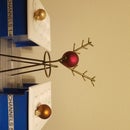Introduction: Retro Beats [DIY Bluetooth Headphones]
This instructable will guide you through my process of making custom Bluetooth headphones.
I chose a classic set of Pioneer SE-50's for this venture.
I picked them up on eBay for 20$ USD.
They were in good shape with exception to a broken headphone chord...perfect.
Parts List:
Pioneer SE-50 Headphones
https://www.head-fi.orgAdafruit Mini Lipo w/Mini-B USB Jack - USB LiIon/LiPoly charger - v1
- I used an old USB charging cable
3.5mm Stereo Panel Mount Jack
- This will replace the broken micro USB connector on the old charging cable I had.
Black Plastic Housing 3.5mm Audio Jack
- This will serve as our DC in on the charging board
https://www.amazon.com/Uxcell-10-Pieces-Black-Plas...
KRC-86B Bluetooth Module
https://www.amazon.com/Aideepen-KRC-86B-Bluetooth-...
3V-6V TDA1308 Headphone Amplifier Board AB Amp Preamplifier Module Hot
- Since the output of the KRC-86b is line level, this will boost the signal to headphone volume levels.
ADAFRUIT INDUSTRIES 1578 Lithium Ion Polymer Battery - 3.7v 500mAh
https://www.amazon.com/ADAFRUIT-INDUSTRIES-1578-Li...
Step 1: Main Power and Audio Backbone
I picked these components as quality sound, long use duration, and safety were my primary concerns.
Step 2: Fitment
Opening the headphones up to address fitment concerns.
Step 3: Ready to Rock
The assembly of the circuit.
Step 4: Finale
Each Driver had enough room to fit the components nicely.
I had to add a headphone amp board for sufficient volumes.
I chose a tda 1308
Connection Flow:
1. Lipo Charger [mini lipo v1] + and - OUT to Bluetooth [Krc-86B] Power IN + and -
2. Bluetooth [Krc-86B] Power + and - to headphone amp board Power IN + and - [tda1308]
3. Bluetooth [Krc-86B] audio OUT to headphone amp board audio IN + and - [tda1308]
4. Headphone amp [tda1308] audio OUT + and - to headphone drivers + and - [Pioneer SE-50]
5.1/8 panel connector [not pictured] + and - to the DC IN + and - of the Lipo charger [mini lipo v1]
6. Cell [ Ada Fruit 1578] to Lipo charger [mini lipo v1] header
7. Reassembly.
Step 5: Result
They're a little dirty, however for their age not too bad.
I will be taking them to a shoemaker to see if they can replace this white material and recover the ear pads.
They sound great on classic recordings, however, they lack modern sub bass levels.
I personally enjoyed this project as both a tech and also as an audiophile.
Now if you don't mind, I have a date with The Steve Miller Band and ELO.
I hope you enjoyed this instructable.












